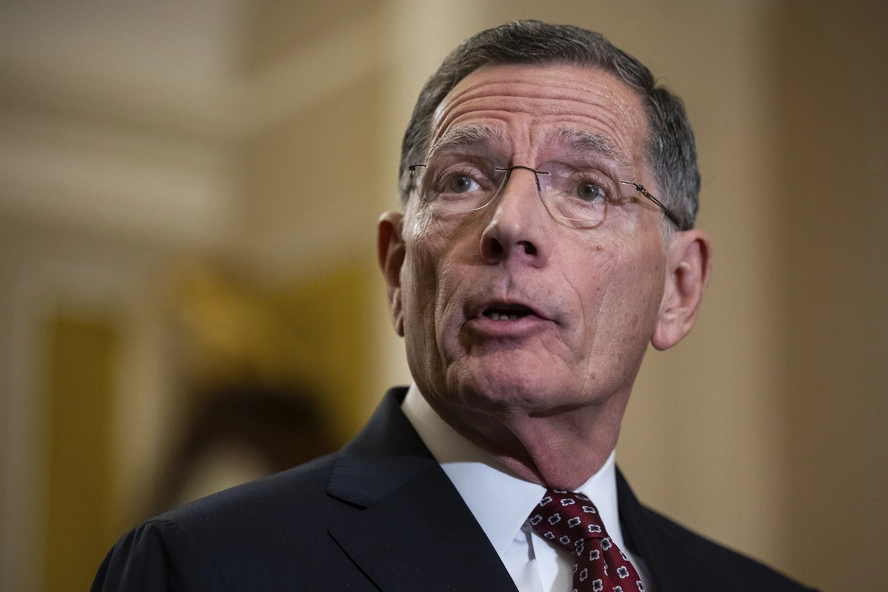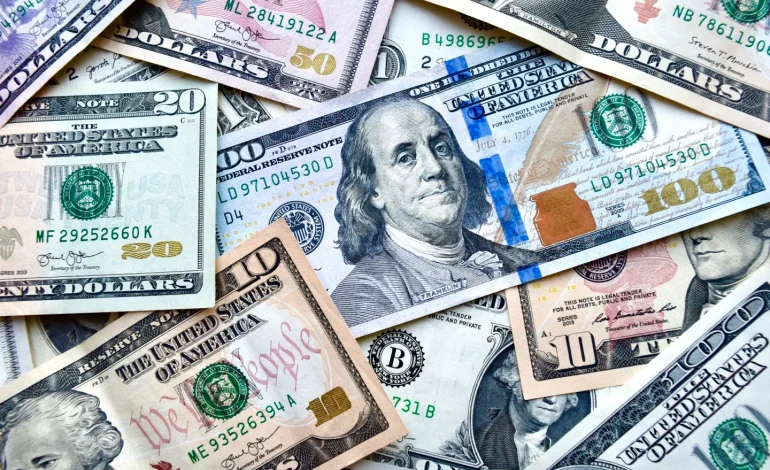The US dollar resumed its downward trajectory on Wednesday, with a key index tracking its performance against major currencies falling as investor concern over escalating trade tensions continued to weigh on US assets.
The Bloomberg Dollar Spot Index declined by as much as 0.6% in early London trading before paring losses to 0.5%. The drop followed a brief rebound on Tuesday that ended a five-day losing streak. The dollar weakened against nearly all Group-of-10 currencies, with the euro climbing up to 0.9% and haven currencies such as the Swiss franc and Japanese yen also gaining.
The renewed sell-off was spurred by growing fears that the trade conflict between the US and China could deepen, particularly after the Trump administration introduced new export restrictions on Nvidia Corp.’s advanced chip technology. The move added to broader concerns that trade policy uncertainty may undermine confidence in dollar-denominated assets.
“All this uncertainty and talk of more tariffs is fueling the idea of de-risking from US assets — sell the dollar,” said Rodrigo Catril, a strategist at National Australia Bank. “Euro and Swiss franc are prime candidates of that flow, even as the trade war escalates and global growth deteriorates.”
The dollar has now declined roughly 8% this year and is hovering near a three-year low. The recent downturn comes as a surprise to some investors who had anticipated that tariffs would strengthen the dollar by discouraging imports and reducing the demand for foreign currency. However, the broader economic impact of trade barriers, along with investor uncertainty about the direction of US policy, has sparked a different reaction.
In recent weeks, US stocks and government bonds have also experienced volatility, with both markets falling in tandem with the dollar — a pattern that analysts like Krishna Guha of Evercore ISI describe as “rare, ugly, and worrying.”
The dollar’s slide is particularly notable given its central role in the global financial system. Nearly 90% of all foreign-exchange transactions involve the dollar, and commodities like oil are typically priced in the currency. Sharp shifts in its value can therefore have wide-reaching economic consequences.
Despite the market reaction, Treasury Secretary Scott Bessent downplayed concerns, describing the dollar as “still strong” and emphasizing its status as the global reserve currency in a Bloomberg interview on Monday.
Some economists caution against overinterpreting the dollar’s weakness. Brad Setser, a senior fellow at the Council on Foreign Relations, noted that much of the recent investment in the US has been driven by a search for higher returns rather than traditional safe-haven demand. As global risks rise and uncertainty grows, some of that capital is now being redirected elsewhere.
At the same time, the prospect of a US recession looms larger in the minds of many analysts. The likelihood that the Federal Reserve may eventually cut interest rates to support the economy — particularly if growth slows and inflation rises — could further diminish the appeal of dollar-based assets.
Federal Reserve Governor Christopher J. Waller acknowledged the market unease in a recent speech, suggesting that the central bank could consider more aggressive rate cuts if conditions deteriorate significantly. He also referenced the adverse market reaction to the administration’s trade policies.
Looking ahead, the dollar’s outlook may hinge not only on trade developments and monetary policy decisions, but also on political dynamics. President Trump is expected to nominate a new Fed chair following Jerome Powell’s term, set to end in 2026, raising questions about the future of the central bank’s independence.
For now, market participants appear to be reassessing their exposure to US assets in the face of growing uncertainty.
“It is not crazy to think that after a period of exceptional policy volatility in the United States and with real risk of recession, some foreign investors might wonder whether they should continue to put an ever-increasing amount of money into the United States,” Setser said.
With input from Bloomberg and the New York Times.










The latest news in your social feeds
Subscribe to our social media platforms to stay tuned